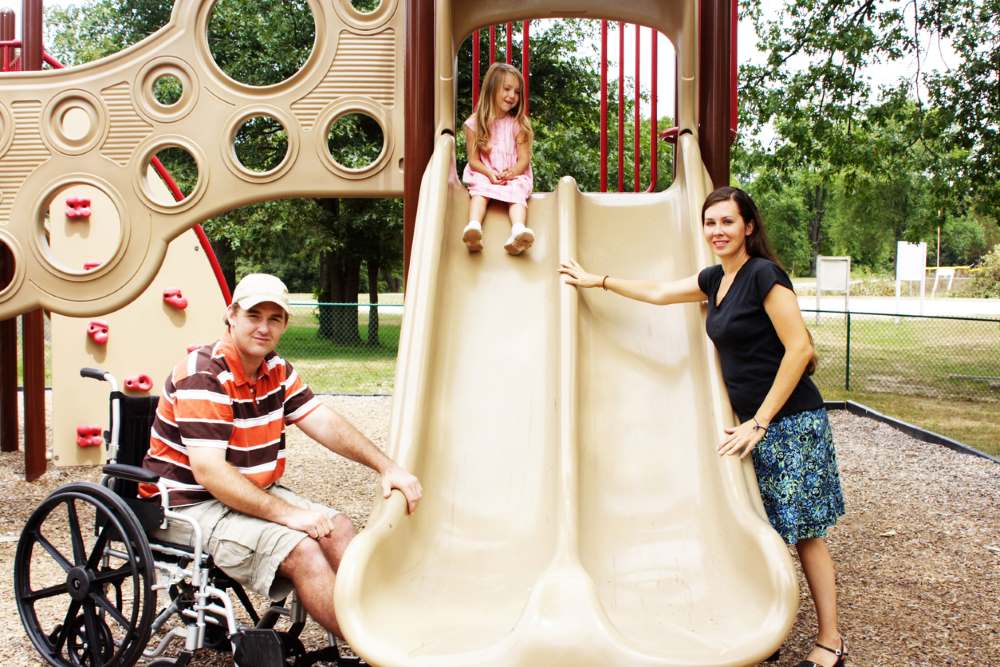
Playgrounds have long been recognized as essential spaces for children to explore, socialize, and engage in physical activity. However, as much as these recreational areas promote fun and development, they pose potential risks. One of the most concerning dangers is the risk of concussions. Understanding this risk and taking appropriate measures to mitigate it is crucial for the safety and well-being of children.
The Nature of Concussions
Concussions, a traumatic brain injury, occur when the brain experiences a sudden jolt or blow. On playgrounds, concussions can happen due to falls from equipment, collisions with other children, or accidents during physical activities. While concussions are often associated with contact sports, it's important to recognize that they can occur in any environment with a potential for head injury, including playgrounds.
Concussion Risks on Playgrounds
Exploring how playgrounds can pose a concussion risk through falls, collisions, and accidents. The height of equipment, uneven surfaces, lack of safety precautions, and overcrowded play areas can increase the likelihood of head injuries. If your child experiences head injury due to the irresponsibility of the playground management, you can take legal action against them. Hire a credible legal team like an experienced Las Vegas brain injury attorney who can help you in this case.
The Vulnerability of Children
The developing brains of children are particularly vulnerable to concussions. Their skulls are thinner, and their neck muscles are not as strong as those of adults, making them more susceptible to injury. Additionally, children may engage in risky behavior or lack awareness of potential dangers, increasing their vulnerability to concussions.
Recognizing the Symptoms
Prompt recognition and proper management of concussions are vital for minimizing the potential for further harm. Parents, teachers, and caregivers should be aware of the common symptoms of concussions, such as headaches, dizziness, confusion, memory loss, nausea, and sensitivity to light or noise. Behavioral changes, difficulty concentrating, or changes in sleep patterns should also be noted.
Mitigating the Risk of Concussions
Safe Playground Design
Playground equipment should be designed and maintained with safety as the top priority. Structures should be built with impact-absorbing materials and regularly inspected for potential hazards or wear and tear signs. Proper surfacing, such as rubber mats or wood chips, should be installed beneath playground equipment to cushion falls.
Adequate Surfacing
It is impossible to overstate the importance of having impact-absorbing surfaces underneath playground equipment. A cushioning effect is created by shock-absorbing materials like synthetic turf or rubber mulch, which lessen the force of falls and the chance of concussions.
Adult Supervision
Supervision is another crucial factor in reducing the risk of concussions. Adult presence and engagement can help prevent dangerous activities, monitor children's behavior, and intervene in case of accidents. Parents, guardians, and caregivers should actively supervise children on the playground and enforce age-appropriate behavior to minimize the likelihood of collisions or falls.
Educational Awareness
Education plays a vital role in raising awareness among both children and adults. Children should be taught safe playground behavior, including how to use equipment correctly and respect the personal space of others. They should also be encouraged to immediately report any accidents or potential head injuries to a trusted adult. Additionally, parents, teachers, and caregivers should be educated about the signs and symptoms of concussions and the appropriate steps to take if a head injury occurs.
Collaborative Efforts for Safety
Municipal Responsibility
Municipalities and organizations responsible for playground maintenance should prioritize safety standards and ensure regular inspections and maintenance. They should also invest in updating older playgrounds to meet current safety guidelines, ensuring a safer environment for children.
Community Involvement
Community members can play a role by advocating for safe playgrounds and supporting initiatives to improve equipment and safety measures. Communities can create safer playground environments by engaging with local authorities, raising awareness, and organizing fundraisers.
Conclusion
The risk of concussions on playgrounds is a significant concern that requires attention and action. By understanding the potential dangers and implementing appropriate safety measures, we can create an environment that allows children to enjoy the benefits of play while minimizing the risk of head injuries. Through proper design, maintenance, supervision, education, and community involvement, we can make playgrounds safer and ensure that children have the opportunity to grow and thrive without compromising their well-being. Let us prioritize the safety of our playgrounds and protect our children's future.



























